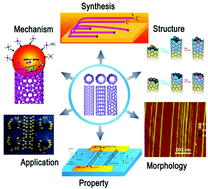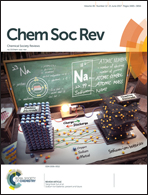Horizontally aligned carbon nanotube arrays: growth mechanism, controlled synthesis, characterization, properties and applications†
Abstract
Carbon nanotubes (CNTs) have attracted worldwide research interest in the past two decades owing to their extraordinary properties and wide applications in numerous fields. Among various types of CNTs, the horizontally aligned CNT (HACNT) arrays, which consist of CNTs grown on flat substrates and parallel with each other with large intertube distances and lengths up to centimeters, show many advantages due to their perfect structures and extraordinary mechanical, thermal and electrical properties. HACNTs show great potential as building blocks for transparent displays, nano electronics, quantum lines, field emission transistors, superstrong tethers, aeronautics and astronics materials, and even space elevators. During the past years, great progress has been achieved in HACNT research. In this review, we systematically review the growth mechanism, structure control, morphology control, characterization, manipulation, properties, and applications of HACNTs. Finally, we present a summary and outlook for the future development of HACNTs. We hope these advances will shed light on the future study of HACNTs.



 Please wait while we load your content...
Please wait while we load your content...